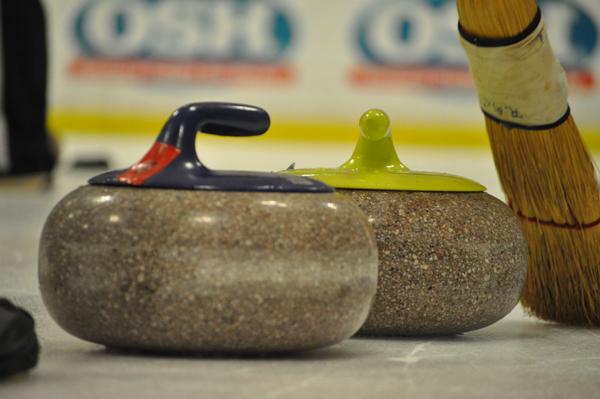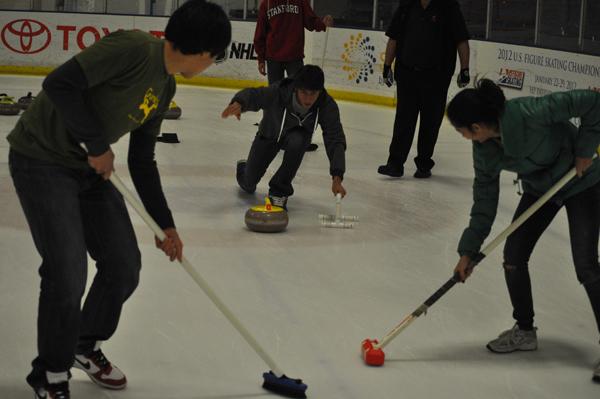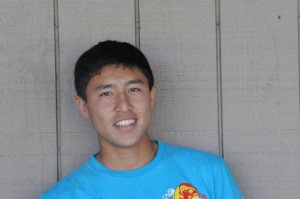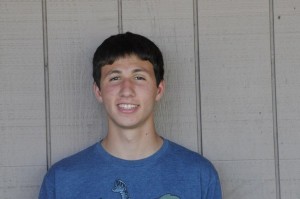WHAT LIVES ON ICE, starts a frenzy every four years, confuses the heck out of ninety percent of its spectators and does all this while crawling along at a… let’s just say a “relaxed” pace? Why, curling of course, that mysterious game of “shuffleboard on ice”… but with brooms and screaming. Our lack of understanding set aside, one couldn’t deny that, for no reason in particular every winter Olympics, this peculiar winter game captivates a much-expanded, wildly enthusiastic and often shockingly unexpected audience—from star tight-end Vernon Davis of the San Francisco 49ers (who, believe it or not, served as honorary captain of the U.S. men’s team this Olympics) to Wall Street financiers who find relaxation in the game’s lethargic pace (plus it airs on CNBC anyway, sparing tired businessmen the unholy drag of finding the channel changer in their G4 jets). With this year’s Vancouver games just finished, the spell has descended like clockwork and yes, The Viking’s chronic curling-itis has returned with a vengeance. There is a cure, though, and I’ve heard they’ve got cases and cases of it down at the San Francicsco Bay Area Curling Club
(SFBACC) in San Jose…
Task one was selecting the team. As might be expected, the offer to go curling caused mass hysteria on the staff, and nearly every Viking cadet was trying to wiggle his or her way into a spot on the team. There was constant sweet-talking and I’ll admit I received some bribe offers that are much too inappropriate to publish here. Regardless, understanding that the grave importance of the task called for the selection of nothing but the very finest in curling talent, I set out to select the team without bias. Thus, after rigorous examinations and much thwarted bribery, I compiled DELTA CURLING SQUAD: myself and four other brave souls picked from the masses, ready to lay down their lives—but first their dignity—for the glory of curling.
It was 9:15 at night and Delta Curling Squad sat nervously in the car, lost in the middle of a mildly sketchy San Jose neighborhood. Having missed our freeway exit and frustrated by incredibly slow red lights, running low on gas and lower on spirits, we traversed the eerily vacant streets as our situation bordered on hopelessness… And then Sam pulled out his iPhone and looked us up some turn-by-turn directions and we were saved. Still, we did arrive about half an hour late to Sharks Ice in San Jose, one of three Bay Area locations of the SFBACC, the Bay Area’s foremost authority on Curling since 1958 and where Brandon, Delta Squad Specialist (our cameraman) had been waiting for about 20 minutes.

Our minds steeled for combat, we entered the chilly, cavernous expanse of Sharks Ice, a giant complex with multiple ice rinks, and more importantly the current location of an official, late-night SFBACC curling session. Luckily, despite our tardiness we only missed out on the off-ice portion of the lesson, something easily remedied by my prior curling expertise. After asking who was in charge, we were fatefully directed to Lyle Seig, a tall, middle-aged man who simply radiated curling prowess (we later learned that his team had been a single shot away from a trip to the world championships in Canada). Lyle kindly took us under his wing, found an extra sheet for us to play on, and then proceeded to teach us the ins and outs of the game, from hoglines to corner guards to the perfect release and sweeping technique.

As we took our very first shots, slipping sliding, and embarassing ourselves, Lyle called down Brent Halpenny, a burly man with a grizzly beard, president of the SFBACC and a man for whom curling is life. Brent was quick to educate us on the unique culture of the game—we learned that Curling is first of all a true gentleman’s sport, where the winning team customarily buys the losers a drink after a match. He also spoke to the profound modesty of professional curlers, pointing out that, on the very same ice where we stood were novices like ourselves as well as former world contenders. Another crucial piece of information we picked up was that, at its core, Curling is profoundly…. well, Canadian. Brent explained that while there might be 15,000 curlers in the entire United States, Canada, with one-tenth the population, fields nearly 3 million. The Brier, the annual Canadian men’s championship, whips up a frenzy comparable to our Superbowl—and at the 2005 Tim Horton’s Brier, a record 281,985 people attended.
Now understanding the puny minority we had gained access to, we set out for our very first curling match. Our opponents were a group of twenty-something business guys. Having never played before, we were at a pretty serious disadvantage and quickly, we found that sliding a 42-pound rock down more than 100 feet of ice into a six foot ring makes finding a needle in a haystack seem like childs-play (and having two sweepers who don’t know what they’re doing either only makes things worse). By the end of our shortened match the score was pretty lopsided but honestly, we could care less, because for all five members of Delta Curling Squad it was unanimous. Curling was the most fun any of us had ever had.
Our experience with curling was valuable on several levels. We learned a great new game, gained entry into a small and affable fraternity of curlers, and now have an incredibly useful icebreaker the next time we venture to the frosty north.
Personally, I feel that I’ve really taken to the game and culture of curling, and, despite my solitary curling expedition, I’d like to fancy myself a true curler, if a budding one. And for this budding curler, as well as the good folks of the SFBACC, nothing would be more pleasing than seeing a frenzy of curling enthusiasm hit Paly.
Oh, and one last thing I forgot. Perhaps more popular than any other aspect of the game, Delta Curling Squad fell in love with the customary greeting of curlers around the world, two words always accompanied by a warm handshake. So, until next time Paly… Good Curling!
Curling for non-Canadians!

History:
- First played in 1300s Scotland
- First Curling Club – Kilsyth Club in 1716 in Scotland
- Emigrated to Canada via Scottish immigrants
- First played in America in 1830 in Michigan
- Tried by The Viking in March 2010
Basic Rules:
- A match consists of 10 Ends.
- In each end, teams alternate shooting eight rocks each.
- Four members on a team, including a skip, lead, second, and third
- A team scores a point for every rock that is closest to the center of the house after every end.
- In each shot, the shooter pushes the stone down the ice and the sweepers use brooms to increase its speed.
Key Equipment:
- 42-Pound Curling Rocks – only produced from a single granite deposit in Scotland.
- Brooms – Old-fashioned brooms were essentially just small wooden dust-brooms but today brooms have synthetic handles and either horse-hair or synthetic brushing surfaces.
- Shoes – Curling shoes have a Teflon sliding sole and a textured sole for the hack foot (the foot used to push off).
Curling In The Bay Area:
San Francisco Bay Area Curling Club
Since 1958
88 S. Third St. #243
San Jose, CA 95113





